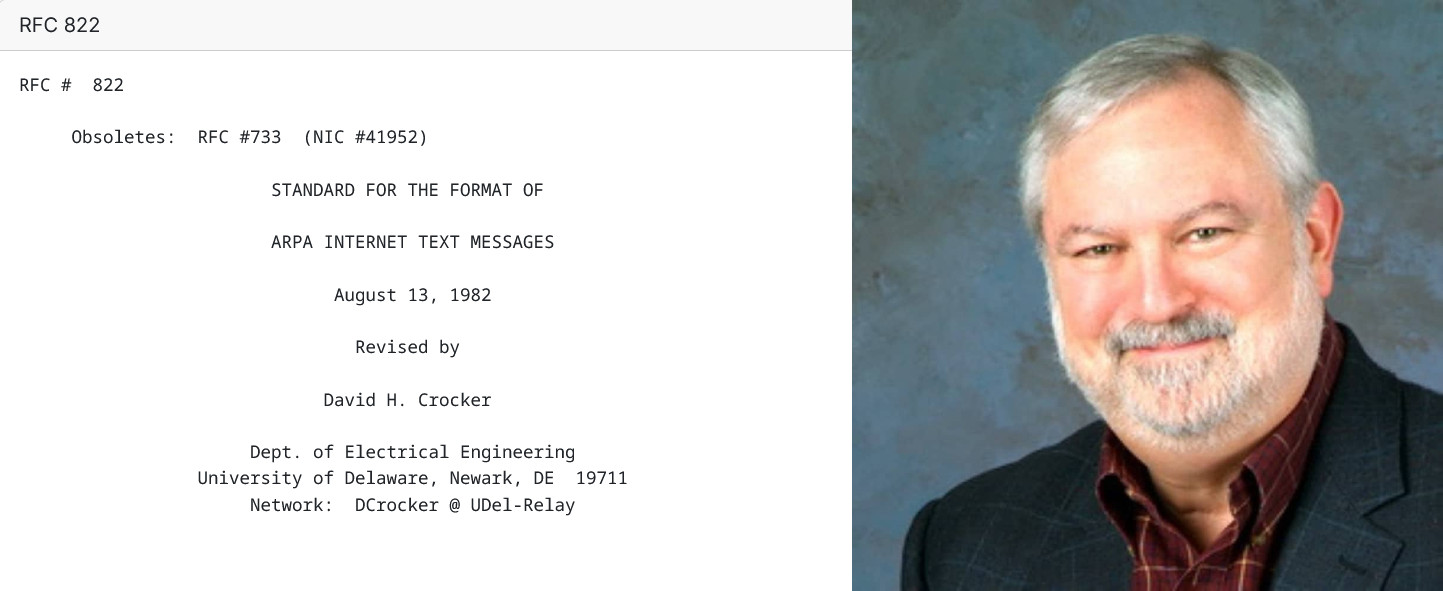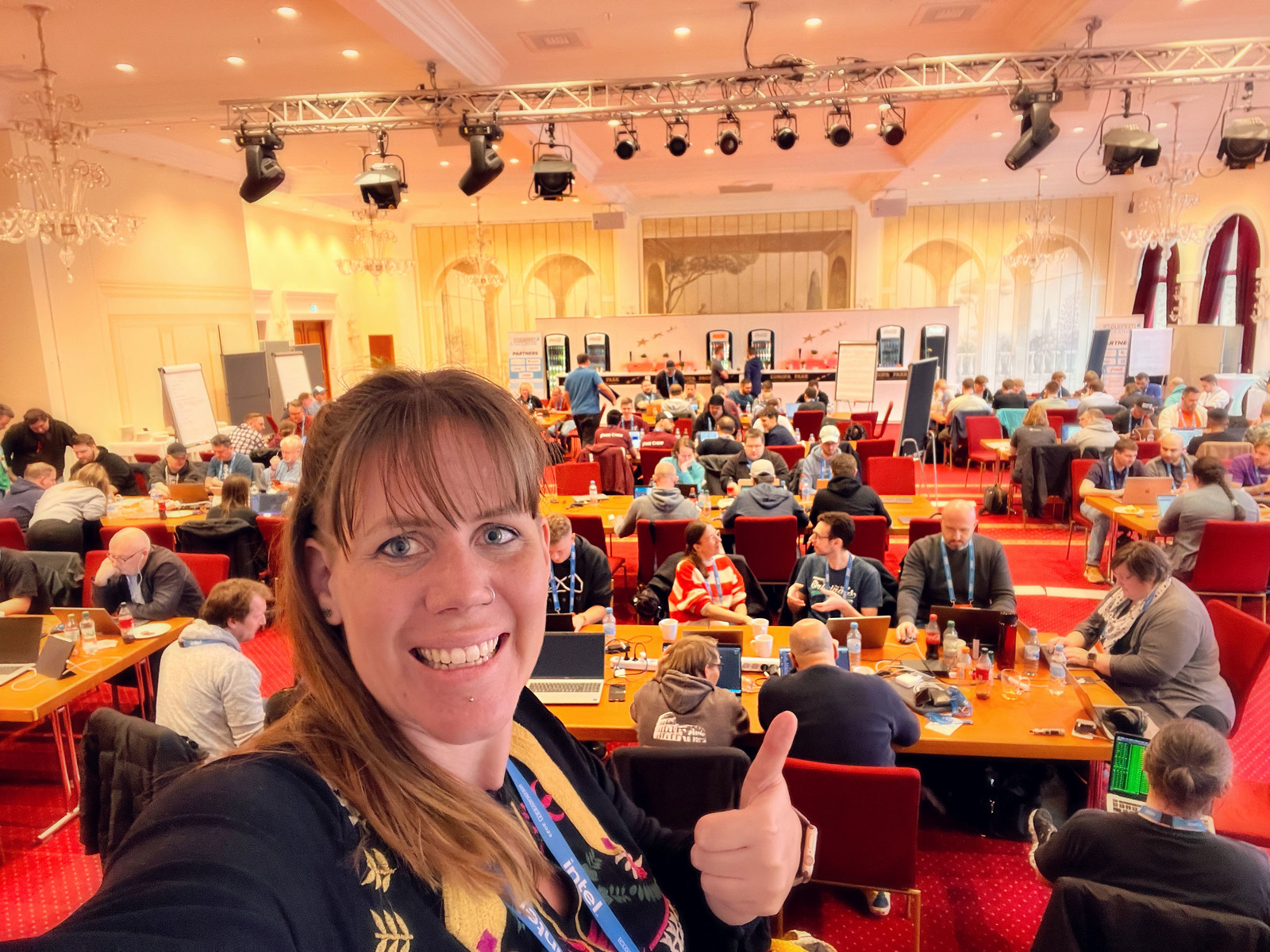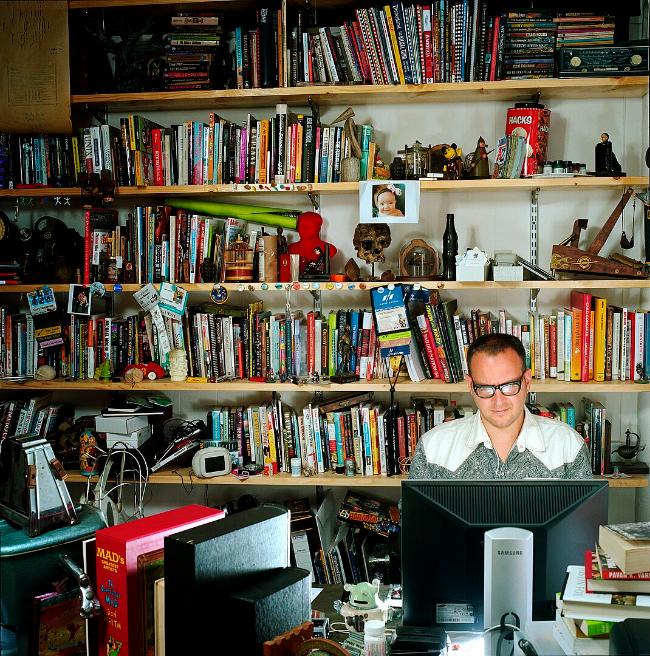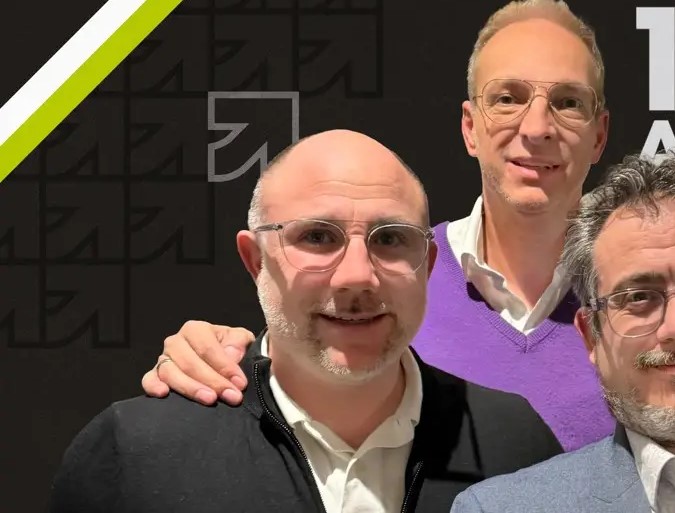Dave Crocker, Principal at Brandenburg InterNetworking, is perhaps the humblest of the internet’s early generation of architects—while also having made some of the most important contributions to the tools we all use daily. Crocker’s work with ARPANET led to a little thing called email: 50 years later it’s still our best frenemy, and upstart apps have been unable to kill it.
Crocker is sitting down with i2Coalition Director Christian Dawson at CloudFest 2025 and you’ll find me in the front row—but as Content Lead I’m going to sneak in and ask a few questions of my own! So let’s begin…
Request for Comment 822 established the standard for email messaging, but your efforts in establishing internet standards—well, ARPANET at the time—goes back to an even earlier co-authored RFC. Can you tell us what it was like as the dawn of standardization broke over the anarchic landscape of the digital world?
At the time, I was a college dropout, pretty much overwhelmed by this activity. My job on the UCLA Arpanet project was user support and documentation. Still, the tone of the team at UCLA and in the meetings with others I attended was extremely collaborative. They were quite polite when I offered a silly thought. I’d started doing small bits of technical work, but really felt out of my depth.
It was clear that the Arpanet was ground-breaking, to the point that having access to it was frankly addictive. But while I did understand its import at a personal level of use, I did not yet understand the global import. In fact that didn’t happen for me until almost almost 20 years later, in 1990, when I was teaching a TCP/IP class in Pittsburgh and demonstrated the Gopher protocol—the Web had only just been invented and was not in general use yet—and the demonstration landed us on a page with the Wellington, New Zealand Town Council minutes from the week before. If that sort of thing was on the net, well, everything would be.
It’s an unfortunate fact of human existence that if something can be built, it will be abused. Can you tell us a bit about your work with the Messaging, Malware and Mobile Anti-Abuse Working Group (M3AAWG)?
Your first sentence is the essential truth.
I hate being right!
Worse, there will be abuse even when nothing has been built. Crime and abuse are in the nature of nearly all human societies. Some expect online abuse to be eliminated, if only we can find the right technological response. And technology has certainly proved essential for keeping things tolerable—the vast majority of email crossing the public internet is spam—and the filtering agents at receiving systems are all that keeps your inbox from being completely overwhelmed.
But “tolerable” is different from “completely gone”. The danger of failing to understand this is the potential to keep adding restrictions to email, which winds up making it less useful. M3AAWG was an excellent environment for me, for 20 years, to seek a balance between controls and flexibility.
We’ve gone from greenscreen email protocols (shoutout to Elm) to TikTok as communication evolves. What do you see as the next frontier in human-to-human communication?
Alas, I never used Elm.
You missed out on a truly underwhelming user experience!
But yes, there was an array of early email user “agents” and devotees to each. There still is.
I think your question goes to the evolution from simple, basic platforms for exchanging messages to ones that are tailored to specific kinds of human communication. From person to person, to casual group discussion, to focused group discussion, to mass communities, and so on. Sometimes these are purpose-built. So for example, the first online collaboration system was built to aid US government response to the gas crisis for the early 1970s. That style of online message exchange has evolved, as has email. But the original versions have not yet disappeared. The death of email has been touted many times, yet here we are—and so is your email address. By the way, the core of an email message from 1975 is exactly the same as a message sent today, 50 years later!
What factors go into a digital tool’s long-term resilience?
I would say relatively simple core functionality and technology, along with broad appeal; and with the ability to scale in size and evolve. In other words, get enough people hooked quickly on a basic use case that they will keep on craving.
The CloudFest community is proud to support Groundbreaker Talents, which provides full-time residential scholarships in Software Engineering to students from financially constrained communities in Uganda. These students are already making waves, such as rocking the CloudFest Hackathon. What advice would you give them about working in this industry that they wouldn’t learn in class?
The Internet has proved an extraordinary equal opportunity engine. Good ideas and good systems can come from anywhere. So can bad ones.
So be bold and be confident, no matter where you are from. But also be thoughtful and critical when analyzing what you are doing. Workers with high-paying jobs in major companies can have silly ideas that work badly. Workers with no pay, and no company, can have wonderful ideas that change the world. Opportunities like Hackathons are excellent for developing and sharing knowledge and skills, while contributing to the community.



